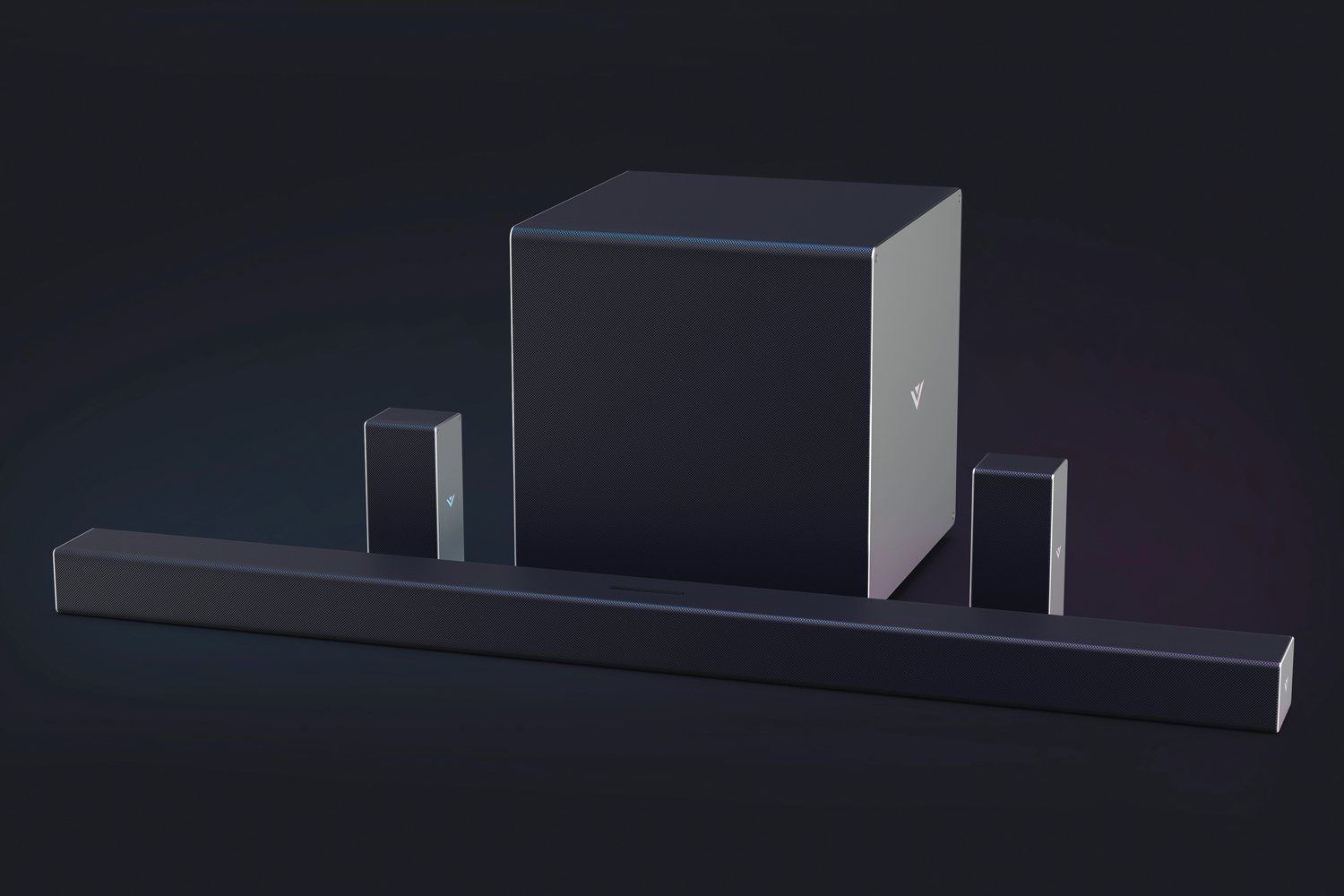
Dolby Atmos object-based surround sound adds height to the traditional surround sound setup, making your movie watching experience more immersive than ever before. But setting up a whole Atoms-Ready surround system can be a hassle. Earlier this year, Vizio debuted new soundbars, all of which feature Dolby Atmos built-in, along with a host of other features, and now we know what they’re going to cost you.
When compared to bare-bones soundbars, these aren’t exactly cheap, but for what they provide, they’re not super expensive either. The cheapest model, a 36-inch, 5.1.2-channel device, will sell for $500. There are two 46-inch models available for those looking for something a little bigger: a 3.1.2-channel model that will retail for $800, and a 5.1.4-channel model that will sell for $1,000. All of these seem styled to be perfect companions to Vizio’s 2018 TV lineup, including the P-Series Quantum, which looks incredible for the price.
In case you’re wondering what those numbers mean, it’s simple. The first two numbers are the same as you would see in a standard surround sound system, with the first number meaning the number of surround channels (or speakers, in a traditional system), and the second meaning a subwoofer. That third number is the number of height channels, so a 5.1.4-channel package has five surround channels, a subwoofer, and four height channels. With soundbars, you might not have the same number of physical speakers as you do channels, as some pieces of hardware feature multiple speakers firing in different directions.
Dolby Atmos isn’t the only cool thing these soundbar packages feature. No matter which one you buy, it will feature Google Chromecast built-in, letting you stream music from any Chromecast-enabled app, like Google Play Music, iHeartRadio, Pandora, and Spotify. These also feature smart home functions like Google Assistant voice control, meaning you can control the speakers using only your voice.
The 36-inch, 5.1.2-channel model is available now at retailers, including Best Buy, Costco, and Sam’s Club. The other models aren’t available yet and don’t have exact release dates, but Vizio says they will be available at retailers including Amazon.com, Best Buy, and Walmart later this year, meaning you don’t have too long to wait. For an idea of what the competition looks like, see our list of the best soundbars you can buy.
Editors' Recommendations
- What is Dolby Atmos Music, and how can you listen to it at home and on the go?
- Pioneer’s latest budget-friendly Dolby Atmos AV receivers start at $379
- Dolby’s Vegas flex: in person with FlexConnect and Dolby Atmos in-car
- Samsung’s new Dolby Atmos wireless speaker doubles as a picture frame
- Samsung’s flagship HW-Q990D Dolby Atmos soundbar gets Roon support


